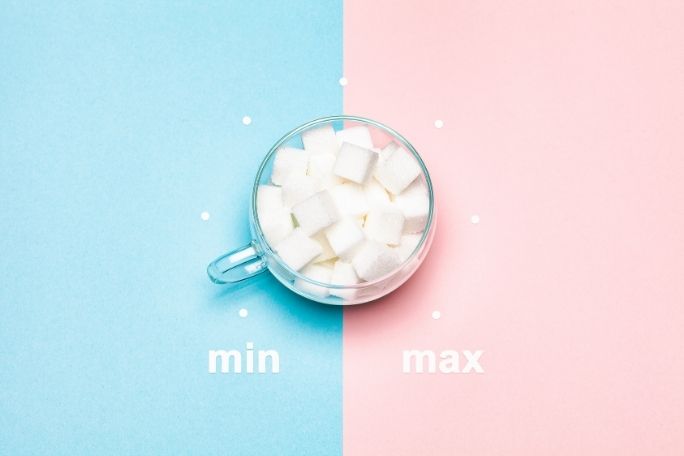Lesson summary
In this lesson, students are introduced to the industries and processes that get food from farmers’ fields into our homes.
The lesson begins by introducing students to the idea of processed food. It shows how heavy processing can allow manufacturers to add sugar into our foods, even when it’s not really necessary. Students then move deeper into food processing, looking at the different steps that are taken to bring food all the way to our homes. They identify potential spots along the way where sugar might be added into those foods, and then reflect on the different jobs and industries involved in producing and selling food.
Learning intentions:
Students will...
- understand what sugar is and where it comes from
- understand the effects of sugar on the body
- understand how too much sugar can negatively affect our bodies.
Success criteria:
Students can...
- identify different sugars and where they are found
- identify how different sugars affect the body
- give examples of health issues that arise from the overuse of sugar.
Lesson guides and printables
Curriculum links
Select your curriculum from the options below.
Lesson details
Curriculum mapping
Australian Curriculum content description:
HASS, Years 5 & 6
Year 5
- Locate and collect relevant information and data from primary sources and secondary sources (ACHASSI095)
- Organise and represent data in a range of formats including tables, graphs and large- and small-scale maps, using discipline-appropriate conventions (ACHASSI096)
- Work in groups to generate responses to issues and challenges (ACHASSI102)
- Use criteria to make decisions and judgements and consider advantages and disadvantages of preferring one decision over others (ACHASSI103)
Year 6
- Locate and collect relevant information and data from primary sources and secondary sources (ACHASSI123)
- Organise and represent data in a range of formats including tables, graphs and large- and small- scale maps, using discipline-appropriate conventions (ACHASSI124)
- Work in groups to generate responses to issues and challenges (ACHASSI130)
- Use criteria to make decisions and judgements and consider advantages and disadvantages of preferring one decision over others (ACHASSI131)
Relevant parts of Year 5 achievement standards: Students locate and collect data from a range of primary sources to answer inquiry questions. They sort, record and represent data in different formats, including large-scale and small-scale maps, using basic conventions.
Relevant parts of Year 6 achievement standards: Students locate and collect useful data and information from primary sources. They interpret data to identify, describe and compare distributions, patterns and trends.
This lesson is part of the wider unit of work: SugarByHalf – HASS – Years 5-6
Level of teacher scaffolding: Medium – facilitate class discussion and activities
To view our NZ Curriculum alignment click here
Resources required
- A3 sheets of paper, marker pens and Post-it Notes
- Device capable of presenting a video to the class
- Production Line Example worksheet
- Example Meal image
Additional info
These lessons were developed in partnership with SugarByHalf. SugarByHalf promotes action to reduce sugar-related diseases so that we can live better, stronger and healthier lives.
Their message is simple: to reduce added sugar consumption by half. Eating too much added sugar is a key driver of serious health problems including obesity, type 2 diabetes, heart disease, tooth decay, dementia and mental health conditions. A poor diet also puts children behind their peers, affecting brain development, sleep and ability to learn. Poor diet choices ultimately mean that this generation of children could be the first in modern history to live shorter lives than their parents.
Much of the added sugar in our diet comes from the processed foods and drinks we consume. On average, we consume 14-16 teaspoons of added sugar per day. Teenagers consume more than 20 teaspoons per day. The World Health Organisation says we should limit our daily added sugar intake to 6 teaspoons for good health. To put that in perspective, there are 4 grams of sugar in one teaspoon. If something has 20 grams of sugar, that's 5 teaspoons of sugar.
This English lesson focuses on developing the skills and knowledge students need to critically consider messages about food and drink they are exposed to, thereby equipping them to be able to make healthy choices.
Talking about health
- Be mindful of students who may experience weight stigma. Some students may be sensitive to conversations around weight, body size or shape. Terms including obesity, weight issues, weight-problem and fat can be stigmatising for some people because they assign blame. It is important to note individual preferences around language vary. Research has shown using the terms ‘weight’, ‘weight gain’, ‘healthy weight’, ‘unhealthy weight’, and ‘high BMI’ are preferred as better alternatives.
- Be mindful about how you use the word ‘diet’. We recommend focussing students on the positive impacts of healthy nutrition and healthy lifestyles which help us to have stronger bodies and minds, feel good and sleep well.
- Steer students away from any focus on appearances by communicating that appearance does not determine your worth. We recommend the fact sheets from the Butterfly Foundation on body image tips.
- Avoid using labels such as obese or diabetic. Refer to people living with diabetes, people living with cancer, people with high BMI etc.


Welcome back!
Don't have an account yet?
Log in with:
Create your free Cool.org account.
Many of our resources are free, with an option to upgrade to Cool+ for premium content.
Already have an account?
Sign up with:
By signing up you accept Cool.org's Terms and Conditions(Opens in new tab) and Privacy Policy(Opens in new tab).